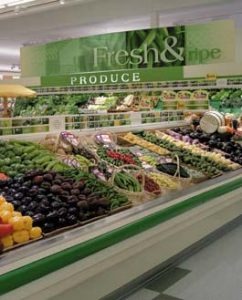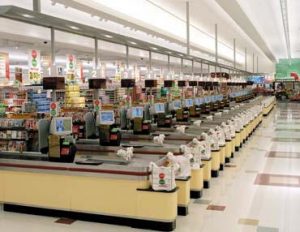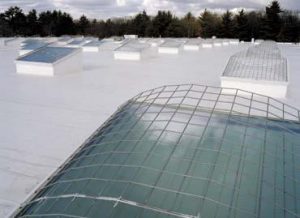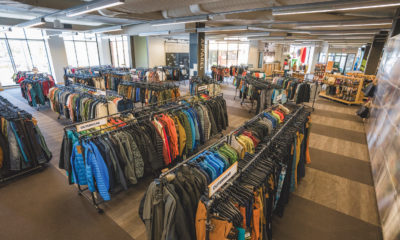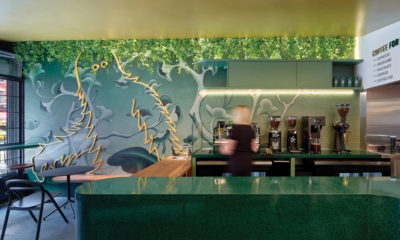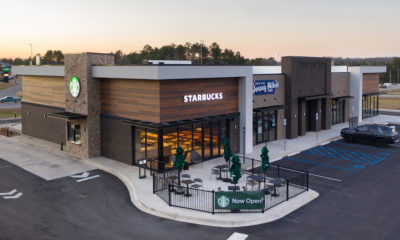Even before the days of Skyrocketing oil prices, rolling California blackouts and power outages in the Northeast, Royal Ahold, a Dutch conglomerate whose entities include Tops, BI-LO and Stop & Shop, was already looking at its energy consumption in the U.S.
In 1999, the company's energy bill for its six U.S.-based supermarket companies was $200 million. Of those six, East Coast chain Stop & Shop was racking up annual energy costs of $60 million, with estimates projecting it would rise to $100 million by 2001.
“That was an eye-opener,” says Jihad Rizhallah, Stop & Shop's vp, design and engineering. “So we wondered what we could do about it.”
That led to the “Low Energy Super Store,” or LESS, project, developed in partnership with the Rocky Mountain Institute (RMI, Old Snowmass, Colo.), a nonprofit organization that helps companies develop more resource-efficient business solutions.
During a 1999 “Design Charette,” led by RMI, Stop & Shop executives and green design experts identified two areas of concentration: improve energy efficiency and use greener building materials where possible.
The former would be delivered through a redesigned lighting system for the prototype. Lighting designer Nancy Clanton, founder and president of Clanton & Associates (Boulder, Colo.), says one of management's biggest fears was that reducing energy would mean reducing in-store lighting levels.
“They wanted this clean, sparkling look,” says Clanton. “So I measured the lighting levels at one of their existing stores and found that the lighting level on the floor was three times higher than the light level on the product.”
Clanton proposed replacing the supermarket's existing metal halide downlights with T5 fluorescents from Philips Lighting Co. (Somerset, N.J.).
“Fluorescent puts out more light per energy watt than metal halide,” says Clanton.
Far more radical, however, was the idea to use daylighting in the LESS prototype. Clanton worked with ENSAR Group, a Boulder, Colo.-based architecture firm, to design the daylighting system. It was then tested in a full-scale mock-up to convince executives, who were concerned about the quality of light and product presentation, to make the investment. “Also, we had to show them that skylights don't leak and that the sun will not melt the chocolate,” says Clanton.
With some adjustments, the LESS prototype opened in Foxboro, Mass. Ambient light is supplied throughout the store by more than 50 skylights. To keep direct sunlight from damaging products in areas like produce, a special glazing film by 3M Co. (St. Paul, Minn.) filters UV and other harmful rays, while reflectors redirect the light to bounce off the ceiling before hitting the products.
Supplemental fluorescent lighting is controlled by a dimming system from Lutron Electronics Co. (Coopersburg, Pa.), and 39-watt metal halide spotlights from Lighting Services Inc (Stony Point, N.Y.) highlight endcap displays, product spotlights and in-store signage.
Three years after its debut, the store is still a bright success. The Foxboro store averaged 26 percent energy savings in 2003 and 25 percent year to date in 2004.
Not stopping there, the company has begun incorporating daylighting into all new build-outs and targeted retrofits.
“Bringing daylight into any place livens it up,” says Rizhallah. “It enhances the colors and quality of the environment.”
Client: Stop & Shop, Quincy, Mass.
Design: Group Red LLC, New York
Outside Design Consultants: Clanton & Associates, Boulder, Colo. (lighting)
ENSAR Group, Boulder, Colo. (daylighting consultants)
Fore Solutions, Portland, Maine (sustainability consultants)
Architect: Jacobs Carter & Burgess Inc., Cambridge, Mass.
General Contrator: Bowdoin Construction Corp., Needham Heights, Mass.


 Photo Gallery2 days ago
Photo Gallery2 days ago
 Headlines1 week ago
Headlines1 week ago
 Headlines2 weeks ago
Headlines2 weeks ago
 Sector Spotlight2 weeks ago
Sector Spotlight2 weeks ago
 Headlines1 week ago
Headlines1 week ago
 Headlines4 days ago
Headlines4 days ago
 Headlines2 weeks ago
Headlines2 weeks ago
 Designer Dozen1 week ago
Designer Dozen1 week ago
